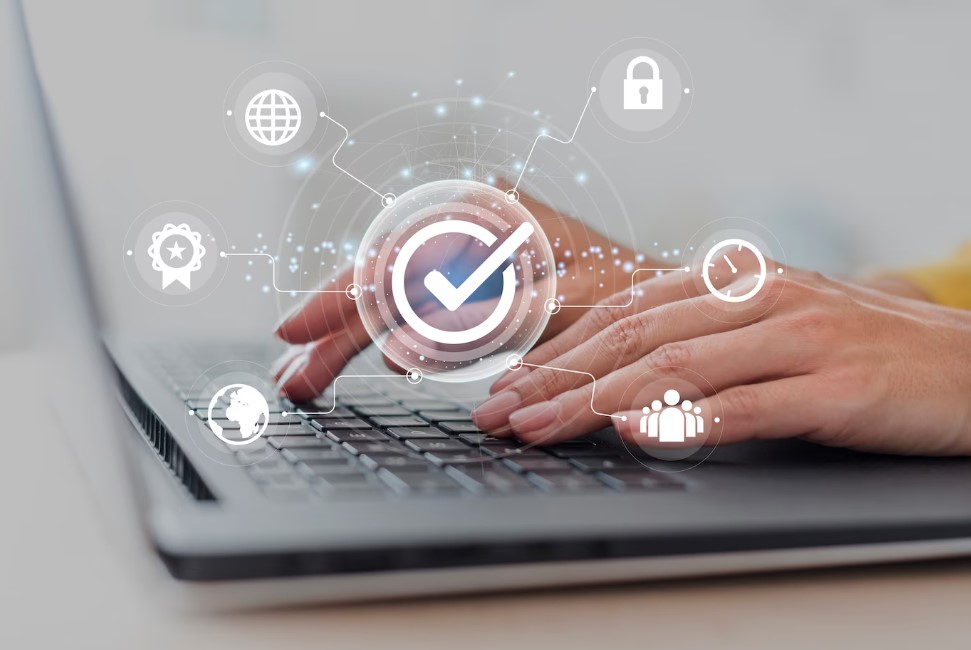
The rapid advancement of technology has brought about significant changes in various industries, including finance, security, and gaming. As these sectors continue to evolve, a convergence of these domains is emerging, creating new opportunities and challenges. In particular, the intersection of security, currency, and gaming has paved the way for safe and seamless online transactions. This article explores the tech trends that contribute to this convergence and how they ensure secure transactions in the digital realm.
Blockchain Technology: The Foundation for Trust
Blockchain technology has revolutionized the way we perceive security and transparency in transactions. It operates as a decentralized and distributed ledger, recording and verifying transactions across a network of computers. Blockchain’s immutability and cryptographic principles make it highly resistant to fraud and tampering.
In the realm of online gaming, you can play roulette online for free and with AUD, but blockchain technology ensures security by removing the need for intermediaries and granting users complete control over their virtual assets. Just as cryptocurrencies like Bitcoin and Ethereum utilize blockchain for peer-to-peer transactions, online gaming platforms leverage this technology to enable seamless in-game transactions, reducing the risk of fraud and lowering transaction costs. By incorporating blockchain into online gaming, players can enjoy enhanced security and trust in their virtual transactions, allowing for a more immersive and transparent gaming experience.
Two-Factor Authentication (2FA): Strengthening Security
Two-factor authentication (2FA) has become a standard security measure in the digital realm. It adds an extra layer of protection to online transactions by requiring users to provide two separate pieces of evidence to verify their identity. Typically, this involves combining a password or PIN with a unique code sent to a user’s mobile device.
By implementing 2FA, financial institutions, gaming platforms, and other online service providers enhance the security of their transactions. This technology mitigates the risk of unauthorized access to user accounts and helps prevent identity theft and fraudulent activities.
Biometric Authentication: Uniquely Secure
Biometric authentication leverages unique physical or behavioral attributes, such as fingerprints, iris patterns, or facial recognition, to verify the identity of individuals. This technology adds an unparalleled level of security to online transactions by ensuring that only authorized users can access their accounts.
In the gaming industry, biometric authentication can be integrated into platforms to prevent unauthorized account access and protect in-game assets. Financial institutions also adopt biometric authentication to verify users during online transactions, reducing the risk of fraud and ensuring a seamless user experience.
Tokenization: Securely Handling Sensitive Data
Tokenization is a process that replaces sensitive data, such as credit card numbers or personal identification information, with non-sensitive tokens. These tokens are meaningless to unauthorized parties, making them useless in the event of a data breach. Tokenization enhances the security of online transactions by reducing the risk of exposing sensitive information.
By adopting tokenization, gaming platforms and online merchants can process transactions without directly handling customers’ sensitive data. This approach significantly reduces the impact of data breaches and enhances customer trust in the security of their online transactions.
Artificial Intelligence (AI) and Machine Learning (ML): Detecting Fraudulent Patterns
The use of AI and ML algorithms has proven to be instrumental in identifying and preventing fraudulent activities in online transactions. These technologies analyze vast amounts of data and patterns to detect suspicious behavior and raise alarms when necessary.
One of the primary ways AI and machine learning are employed in fraud prevention is through anomaly detection. These technologies can analyze vast amounts of data and identify patterns and behaviors that deviate from the norm. By establishing baseline models of typical user behavior, AI systems can flag any unusual activities that may indicate potential fraud. This approach enables organizations to respond promptly and take necessary actions to prevent fraudulent transactions or activities from occurring.
Another important application of AI and machine learning in fraud prevention is the use of predictive modeling. By leveraging historical data and patterns, these technologies can create predictive models that identify potential fraudulent activities or transactions in real-time. Through continuous learning and adaptation, these models become increasingly accurate and effective in detecting and preventing fraud.
AI and machine learning are also utilized for identity verification and authentication. By analyzing various data points such as biometric information, user behavior, and historical records, these technologies can accurately assess the legitimacy of individuals accessing online platforms or conducting transactions. This helps in reducing identity theft and unauthorized access, ensuring secure and trusted interactions.
The convergence of security, currency, and gaming has revolutionized the way online transactions are conducted. Blockchain technology and Decentralized Finance solutions such as Vai provide a foundation of trust and transparency, while 2FA and biometric authentication enhance security measures. Tokenization ensures the secure handling of sensitive data, and AI and ML algorithms assist in detecting and preventing fraudulent activities.
As technology continues to advance, it is crucial for stakeholders in finance, security, and gaming to collaborate and implement these tech trends effectively. By doing so, they can provide users with safer and more secure online transactions, fostering trust and enabling the growth of the digital economy.

Taylor is a freelance SEO copywriter and blogger. His areas of expertise include technology, pop culture, and marketing.











